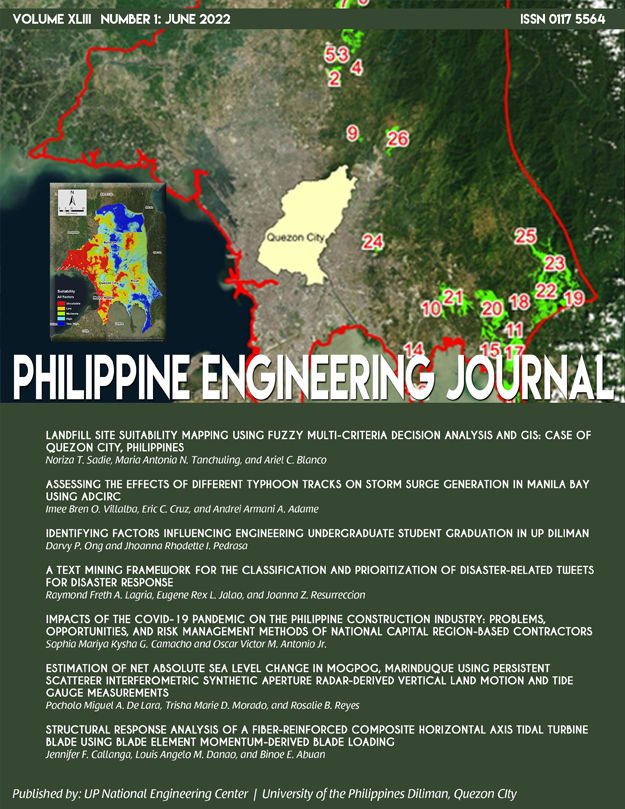Landfill Site Suitability Mapping Using Fuzzy Multi-Criteria Decision Analysis and GIS: Case of Quezon City, Philippines
Abstract
Most of the municipal solid waste generated in the Philippines is disposed in dumpsites and landfills. However, many of these disposal facilities have already reached their maximum capacity, and thus new locations must be sited. The Philippines’ Republic Act 9003 mentions criteria for the landfill site selection but some of these parameters have no quantitative value. The lack of appropriate and intensive methodology in the country also makes it difficult for the local government units to identify areas within their scope. This study aims to present a methodological framework for identifying municipal landfill sites in the provinces of Bulacan and Rizal for Quezon City’s waste. The framework involves Fuzzy Multi-Criteria Decision Analysis (FMCDA) combined with the use of GIS to aid in the site selection. Since siting a sanitary landfill requires extensive evaluation procedures to identify the best available landfill site, the procedure in this study employs every critical requirement such as government regulations and minimum impact in the environmental, social, and economic aspects. A final list of 14 factors and constraints, along with their corresponding weights and attributes as obtained from the legislature, literature, and experts’ opinion, was considered. Using magnitude method for defuzzification and weighted linear combination for aggregation, a final suitability map was presented. Further, 26 areas were identified as highly suitable sites, 3 of which can be considered as potential candidate sites in accordance with economic viability as imposed by the government of Quezon City.
Keywords — FMCDA, GIS, magnitude method, municipal solid waste, site selection, suitability map


